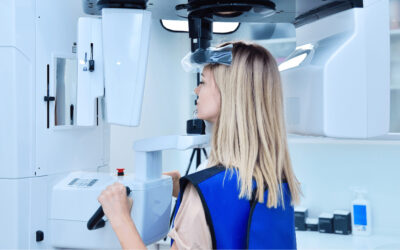
Dental implant surgeries involve placing dental implants in the patient’s jawbone for the purpose of supporting prosthetics such as dentures, bridges, or crowns. To ensure this procedure is performed accurately each time, surgical guides have become increasingly popular over the years.
What is a surgical guide for dental implants?
Surgical guides are tools that are used to aid in the placement of dental implants during surgery. These medical devices are created from a 3D scan of a patient’s mouth, and can be made out of acrylic or metal to provide an exact outline of how and where to place a dental implant.
These guides are designed to ensure accurate and precise placement of the implant, which can improve the overall success of the procedure. They can be used in both traditional open surgery and in minimally invasive guided surgery techniques.
Surgical guides for implant placement can be customized to the individual patient’s anatomy and can be used to plan the surgery in advance using computer-aided design software. They are placed over the patient’s jawbone during surgery to guide the implant placement. They can also be used to control the angle, depth, and position of implant placement.
Three of the most common implant surgical guide techniques are:
- Tooth-borne guides
- Mucosal-borne guides, and
- Bone-borne guides
Most Common Surgical Guide Techniques
These techniques may also be used in combination. Let’s take a look at these dental implant placement techniques in more detail:
Tooth-borne surgical guides
Tooth-borne surgical guides offer numerous advantages for implant placement, including accurate, precise results and ease of use. By relying on consistently reproducible landmarks found in the teeth, this guide type is suitable for multiple purposes such as single or multiple implants for fixed restorations.
It should be noted that while these guides are reliable and efficient, they may lack versatility in certain situations – practitioners using tooth-borne guides must be mindful of available space and drill length to treat posterior sites properly. With this consideration, however, tooth-borne surgical guides can greatly benefit a practice with improved precision for implant placements.
Mucosal-borne guides
Mucosal-borne surgical guides use soft tissues inside the mouth for support and stability. They are often made based on an existing removable prosthesis. This approach aims to reduce the risk of damage to vital structures such as nerves, arteries, or sinuses during dental implant placement. It also offers more flexibility for treatment planning and can be used for both single and multiple implants cases where the patient is missing all or most of their teeth.
However, they may have concerns with lack of retention during surgery and variations in tissue thickness and quality. They also have potential to move in different directions which could affect the accuracy of implant placement and make the surgery more complex, but practitioners with experience in this method typically find it less challenging to use than other techniques.
Bone-borne guides
Bone-borne surgical guides for implant placement are used for full-arch cases where all teeth are missing. They use load-bearing areas and the shape of the jawbone for support. These types of guides can be more accurate and precise in terms of implant placement since they do not rely on soft tissue landmarks or impressions.
The downside to these guides is that they require more time to fabricate and are more expensive of a tissue flap to be raised so the procedure is more invasive than the other two guide types. They are more difficult to place because they require a lot of access, and the digital process can be inaccurate. However, with proper planning, accurate imaging, and experienced operator, the difficulties can be minimized.
Unlock the power of computer guided dental implant placement
Surgical guide techniques have revolutionized dental implant placements due to their accuracy and precision. By utilizing one or a combination of these guided dental implant placement techniques, dentists can ensure successful outcomes while reducing the risk of patient complications.
When it comes to dental surgery, accuracy is key. ConeScan surgical guides provide clinics and patients with just that – precision and dependability. With 3D-scanned oral images, specialists can use our surgical guides to accurately plan their procedures with the knowledge that they are within millimeters of their proposed treatment plan. All in all, surgical guides can make a huge difference in any procedure – providing peace of mind for both clinicians and patients alike.


